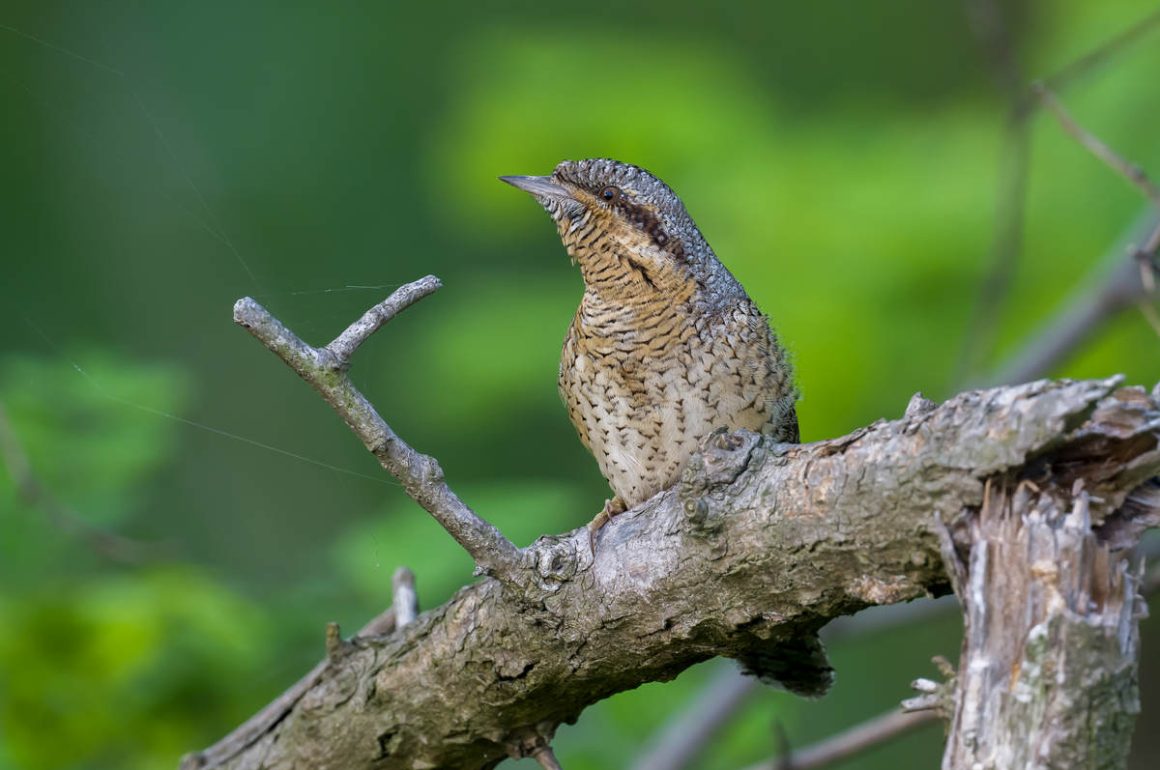
In the woodpecker high school yearbook, the Eurasian Wryneck is described as “most likely to be turned into a low-end sock puppet”. Not very flattering, but then such entries frequently are not.
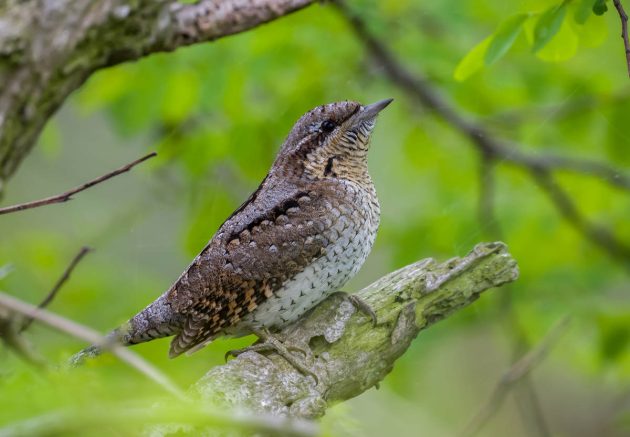
Myself, I was once referred to as “Mr. Negative”, though not in a high school yearbook but rather at one of my employers, a management consultancy. Not a recipe for success in that job, I can confirm.
Wrynecks rarely star in action movies – you can see here why. While the original video quality made it look like it was taken from a boat (it was not), I just developed some rudimentary video editing skills, making watching the video marginally more bearable.
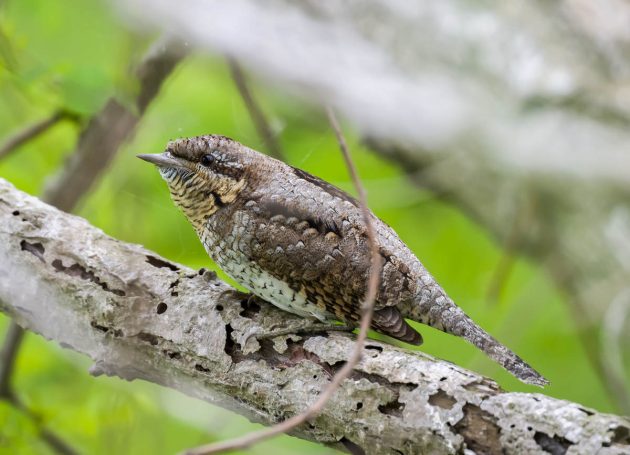
Their sex life is similarly unspectacular. Similar to other woodpeckers, monogamy is the norm in this species – in one study, less than 1% of all chicks were extra-pair young. The abundance of extra-pair paternity is low, and only 0.68% of all young [n = 292] were extra-pair young. A pity, as this severely limits the potential of low-budget jokes about wrynecks turning their heads toward extramarital partners.
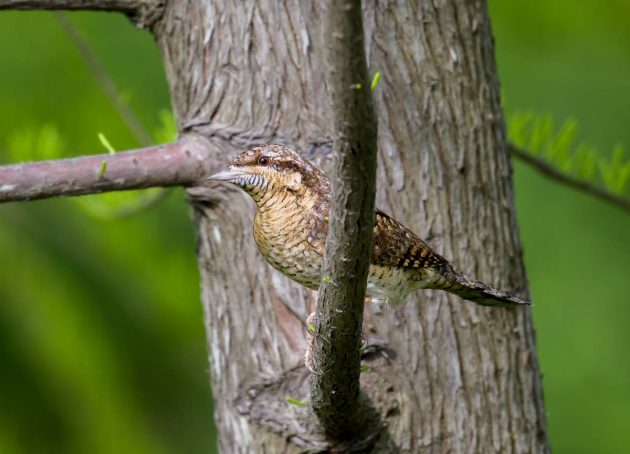
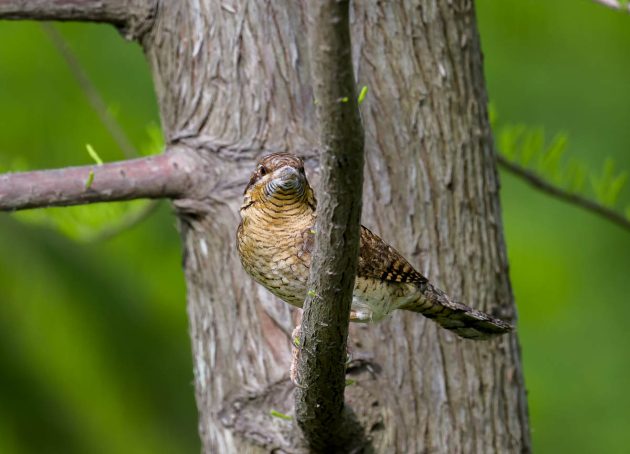
Nevertheless, the wryneck is an interesting bird – so interesting that there is a whole book about it which Donna has reviewed for 10,000 Birds. In said review, Donna comments on “the woodpecker that doesn’t look like a woodpecker, the bird with the portmanteau name that is also a medical condition (and which may remind some people of a Nora Ephron essay). It’s a unique bird, even its scientific name is wonderful …”
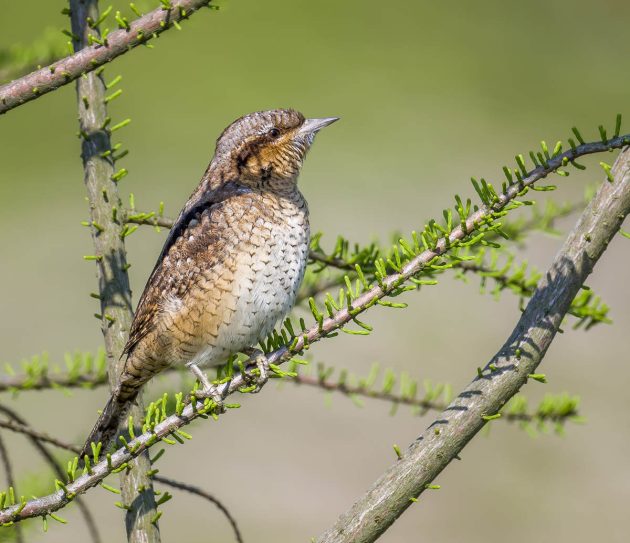
Recently, I watched a wryneck carrying two snails on its body. Unfortunately, my original theory that these snails were kept as pets by the wryneck (after all, unlike for me, keeping a cat as a pet is not very sensible for a bird) was dismissed by more qualified birders who suggested that the bird was probably too exhausted from migration to get rid of the snails.
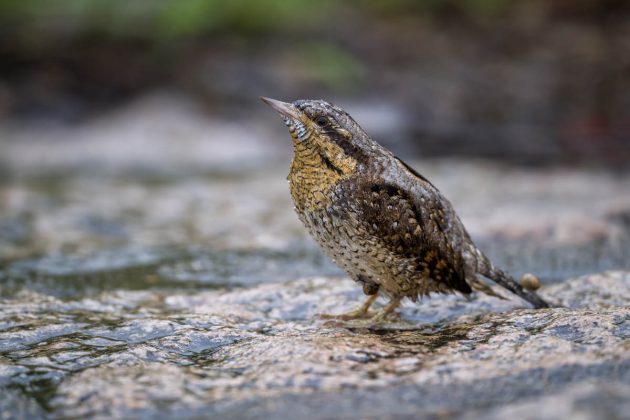
Also as video … or another video … both very similar, so no point in watching both … But you can watch the snails actually moving in the videos.
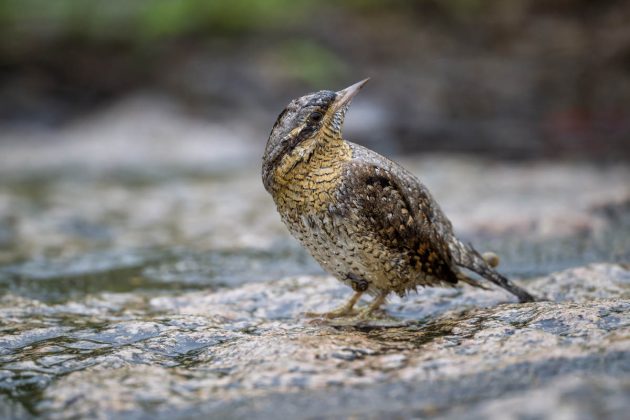
Unfortunately, the title of a paper on Wrynecks (“Why does the Wryneck Jynx torquilla bring strange items to the nest?”) is probably more interesting than the answer given in the paper itself (“The tendency to bring strange items to the nest should not be regarded as adaptative behavior supplementing the diet of the nestlings, but as the consequence of an error or mistake in the release of the picking up pattern in the parent bird”, or in my own words, the parents fucked up).
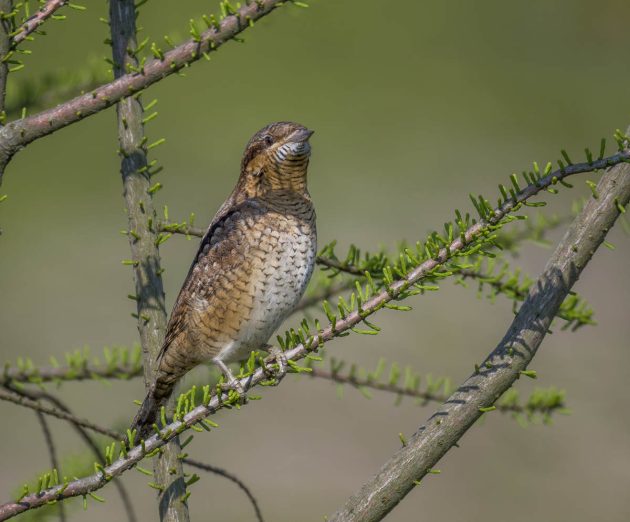
Another paper describes a Wryneck eating a bird – a bit of a deviation from the usual diet of (mainly) ants.
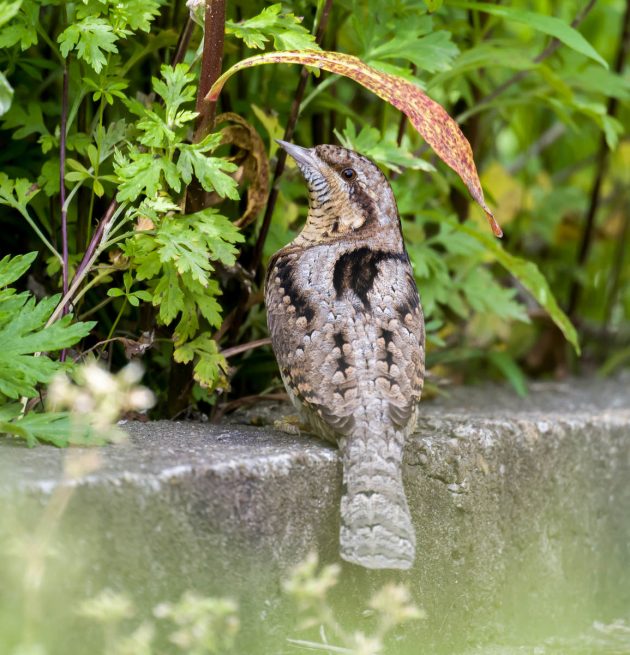
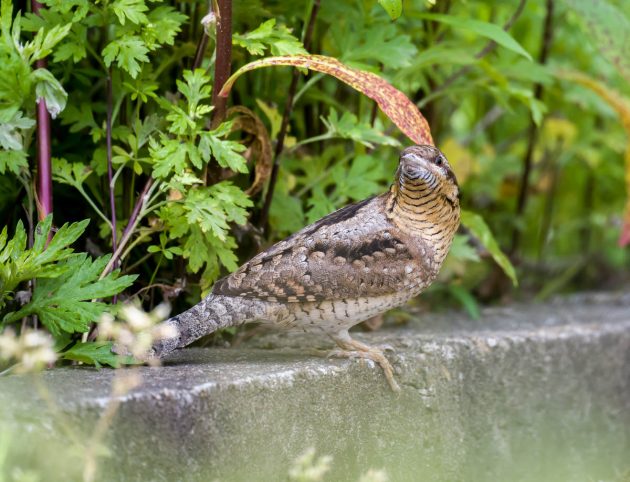
Apparently, in early Greece, the wryneck was associated with charms and potions intended to recover the lost affection of a lover (source). Why? Ask ChatGPT, not me.
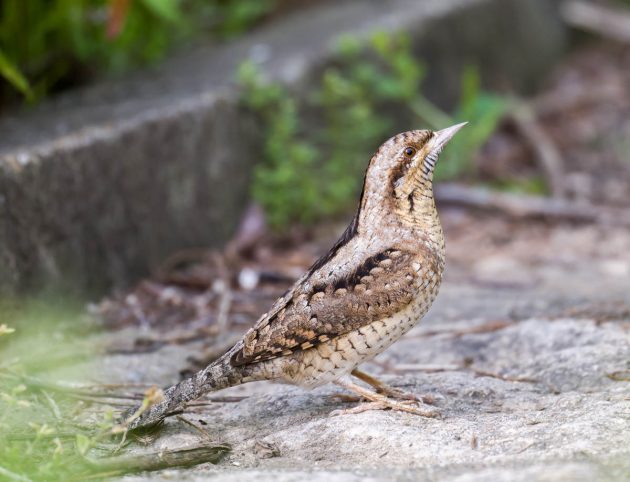
A characteristic of the wryneck is its ability to turn its head by almost 180 degrees. This has led to the German word for the bird (“Wendehals”) getting an additional metaphorical meaning. During the period of reunification in the GDR in 1989, people who quickly changed their stated opinions from pro-GDR to pro-Western were referred to as “Wendehals”, people quick to turn their necks around (source).
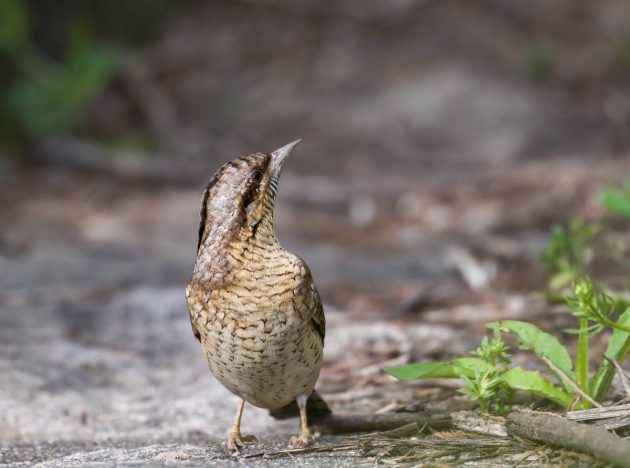
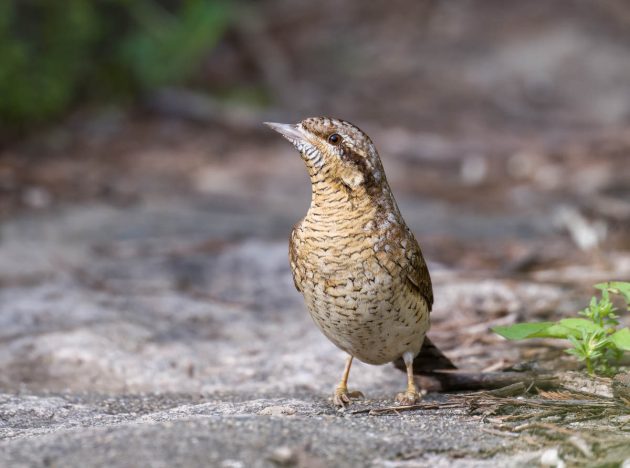
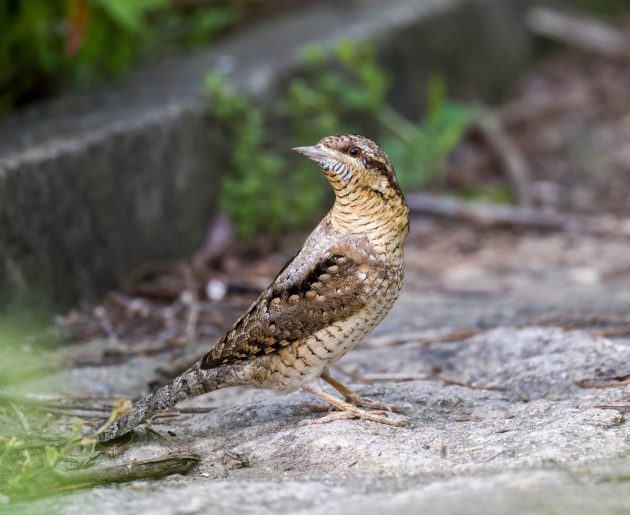
Unfortunately, the wryneck is one of the species suffering from massive trapping in countries such as Egypt and Libya (source). Shame on the people who do this.
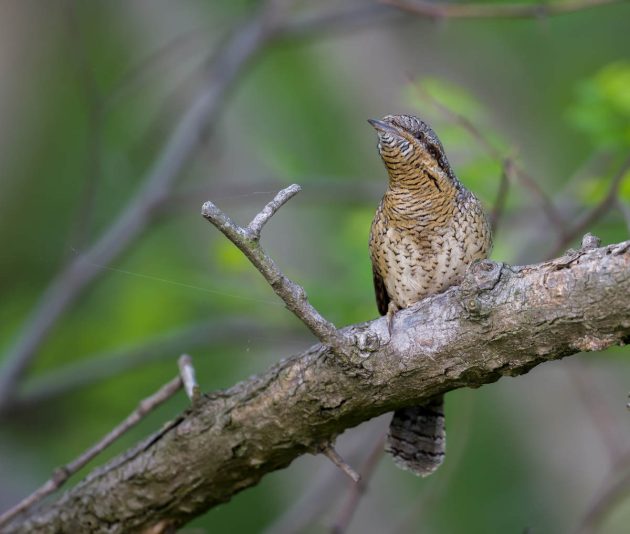
Another video of a wryneck starring as a fairly lazy bird …
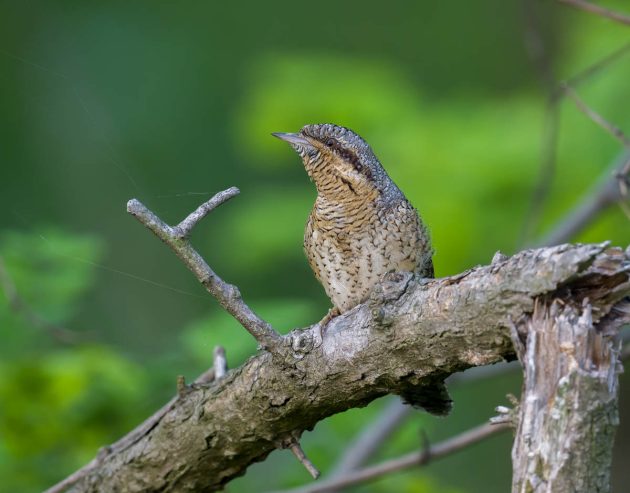
I am fully aware that many of the readers of my posts only scan through the bird photos and bird-related factoids, looking instead for my comments on alternative music. So, here are some thoughts about the long-awaited The National album, “The first two pages of Frankenstein”. Well – parts of it sound like a third Taylor Swift alternative album (though one mostly consisting of B sides), what with acoustic guitar intros, no real drums, and a moderate tempo. Nice, but not quite what I would have wished for from The National.
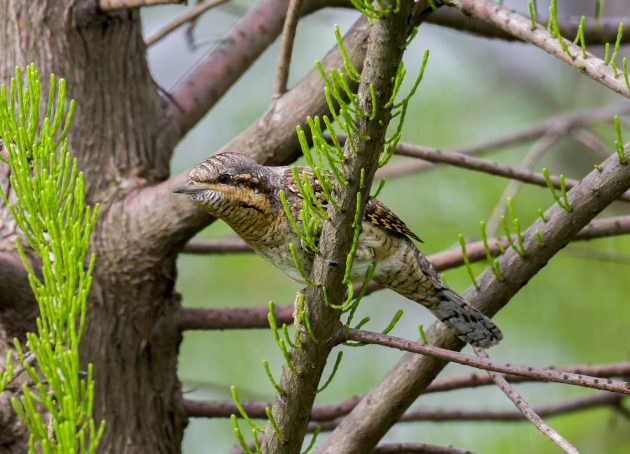
The lyrics seem to be suffused with mild to moderate middle-aged male depression (something I can relate to quite well). Typical lines: “I was suffering more than I let on” or ” I’m here, kicking myself to keep from crying”. I miss the drums, though – except for those in “Eucalyptus”, which I feel is the only stand-out track here (which is a bit of a disappointment in itself).
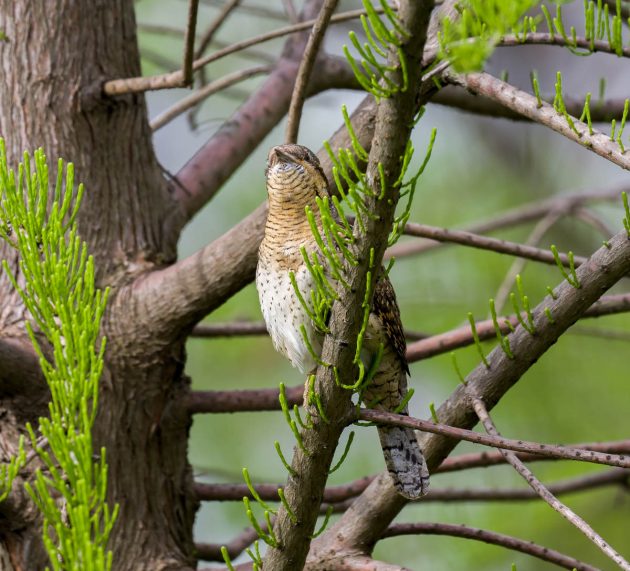
So, I hope I have satisfied my readers – if you are more into bird-related information, please check out my review of the previous The National album in the New Musical Express, which has an in-depth discussion of speciation issues in Phylloscopus warblers.
And a final video – not of The National but (strangely) of a wryneck. As the photos, all videos in this post were taken at Nanhui, Shanghai in April 2023.











Leave a Comment